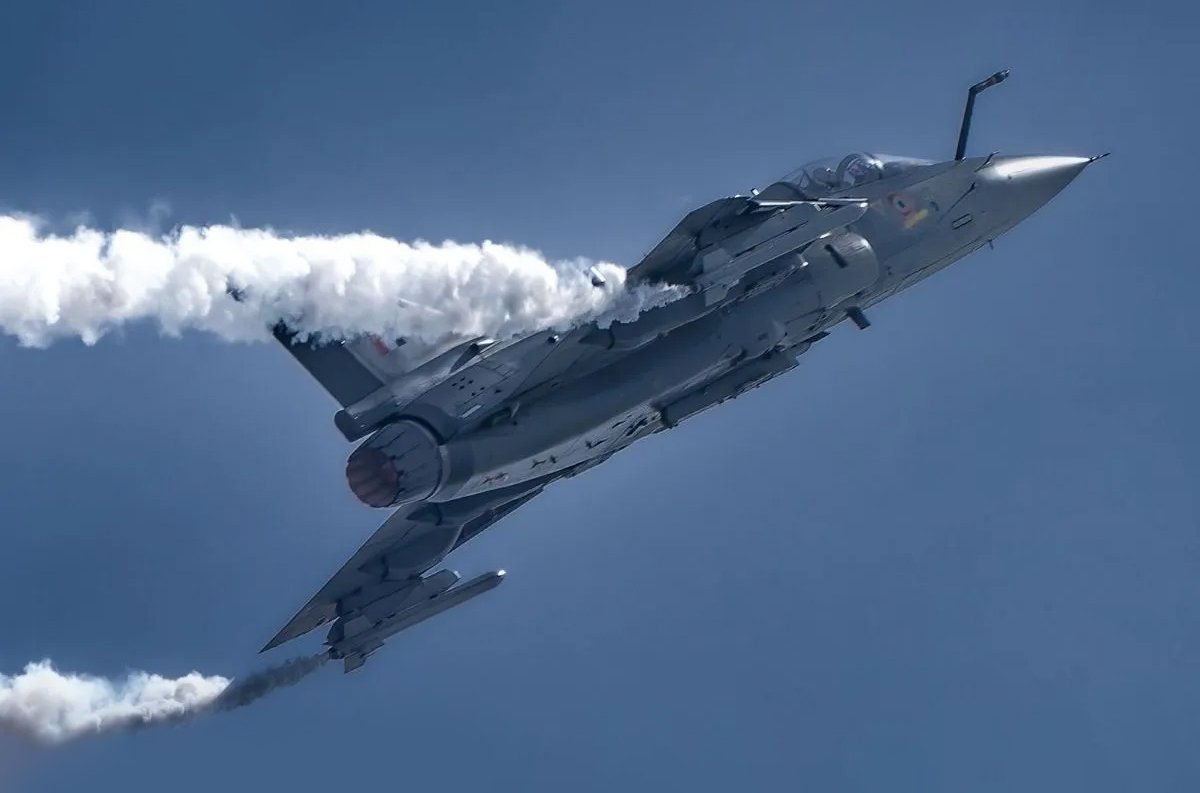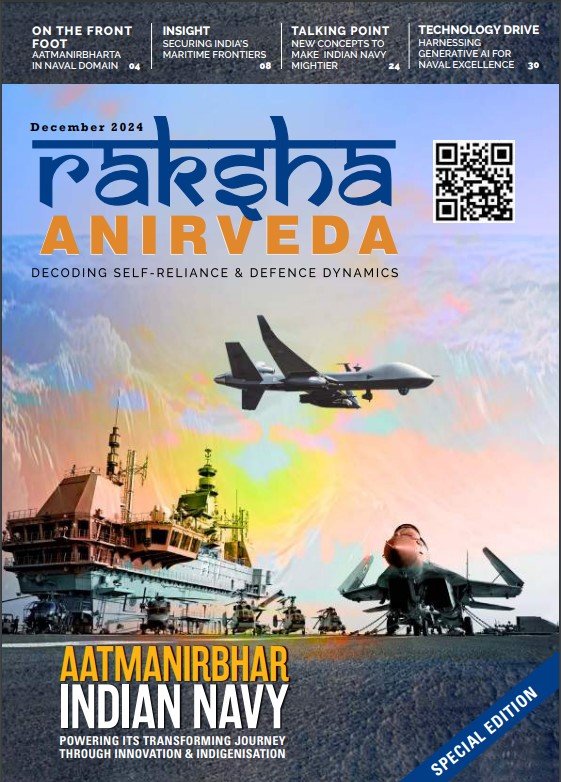India’s pursuit of self-reliance in defense has rekindled its efforts to develop indigenous aero engines, with the Kaveri program, which has been delayed for an extended period, serving as the focal point of this undertaking. The Gas Turbine Research Establishment (GTRE) is leading the project, which has encountered numerous obstacles over several decades; however, it continues to serve as an essential learning environment for future projects. India is currently seeking to overcome historical obstacles and establish itself as a competitive participant in the field of aero engine technology through the implementation of a proposed Public-Private Partnership (PPP) model and the expansion of private-sector involvement.
It appears that the Indian Air Force (IAF) is presently actively supporting the development and revival of the indigenous Kaveri engine program. The objective is to replace the imported General Electric (GE) F404 engines that currently power the Tejas Mk1A fighter jets. Approximately 700 engines, including spares and replacements, will be necessary for the IAF to operate over 220 Tejas Mk1A aircraft for approximately 40 years. Indigenous production is considered essential for operational flexibility and the mitigation of geopolitical risks associated with foreign supply chains. The financial burden of the GE F404 engines over decades is substantial, with each engine costing between $8 million and $10 million. Although this is merely an estimate, the development of a domestic alternative could lead to a reduction in long-term costs.
India is currently seeking to overcome historical obstacles and establish itself as a competitive participant in the field of aero engine technology through the implementation of a proposed Public-Private Partnership (PPP) model and the expansion of private-sector involvement
The Kaveri Program: A Story of Struggle and Resilience
The Kaveri engine initiative, which was initiated in the 1980s, was intended to address India’s dependence on foreign aero engines. However, bureaucratic delays, inadequate funding, and a limited testing infrastructure impeded its development. The 90kN propulsion requirement for the Tejas fighter jet was not met by the original Kaveri engine, despite an investment exceeding ₹2,000 crore (approximately $240 million). Nevertheless, the program was not entirely unsuccessful; its dry variant is currently being adapted for the Ghatak stealth drone by the DRDO, demonstrating that the technology continues to possess strategic value.
The Kaveri’s fundamental design has been confirmed as sound and suitable for in-flight testing by recent evaluations conducted by international firms such as Safran. Nevertheless, critics contend that the extended development cycle has reduced its relevance for modern fighter aircraft. Nevertheless, the program’s contributions to metallurgy, compressor design, and testing methodologies are invaluable, as they establish the foundation for future indigenous engine initiatives.
Godrej Aerospace has already secured contracts to produce critical components for DRDO’s turbojet engines and is positioning itself as a supplier for the GE-414 engine, which will power India’s next-generation fighter aircraft
A New Era of Collaboration: Private Sector Participation
India’s private sector has proposed to provide support for the development of aero engines, acknowledging the necessity for sophisticated manufacturing and innovation. Godrej Aerospace and Larsen & Toubro (L&T) are emerging as significant participants in this industry.
Godrej Aerospace has already secured contracts to produce critical components for DRDO’s turbojet engines and is positioning itself as a supplier for the GE-414 engine, which will power India’s next-generation fighter aircraft. Their expertise in precision manufacturing renders them an indispensable collaborator within the domestic aero-engine ecosystem.
Behemoth Larsen and Toubro (L&T) has suggested a collaborative approach to developing a new 110 kN thrust engine, drawing on its wealth of experience in high-precision engineering. This initiative has the potential to succeed where the Kaveri failed. Jayant Damodar Patil, the director of aerospace and defence at L&T, underscores the necessity of abandoning cost-based tendering (the “L1 syndrome”) in favour of technical competence. He contends that this change is indispensable to avoid the recurrence of past errors and expedite progress.
The development of a complete turbofan engine presents more complex requirements, although Indian companies have demonstrated excellence in specific niche areas. Success in this effort requires sophisticated systems integration capabilities, advanced research and development infrastructure, and exhaustive long-term testing facilities
The Strength of the Private and Public Sectors
A foundation for indigenous aero-engine development has been established in India’s aerospace sector, which has developed significant competencies across multiple companies. Godrej Aerospace has become a manufacturer of intricate aero engine components, manufacturing modules for DRDO’s turbojet engines, and contributing to international programs such as the GE-414. Hindustan Aeronautics Limited (HAL) has accumulated valuable expertise in engine assembly and maintenance, having worked with powerplants such as the Russian AL-31FP and Safran’s M88 for the Rafale aircraft. Bharat Forge’s expertise in precision forging and high-strength metallurgy is also beneficial to the sector, as these capabilities are indispensable for producing critical components such as turbine blades and engine casings.
In addition to these capabilities, Tata Advanced Systems (TASL) has bolstered India’s aerospace manufacturing profile by establishing partnerships with global heavyweights such as Boeing and Airbus, thereby acquiring expertise in aerospace-grade production. The Indian Small and Medium sectors are replete with success tales of innovations that are supplied to the HAL, which saves precious foreign exchange. The heavy engineering and defence divisions of L&T complete this ecosystem, showcasing their capacity to manufacture high-precision engine components and integrate intricate systems. Collectively, these competencies indicate that India has the essential industrial foundation necessary for the development of aero engines. Nonetheless, the main challenge is integrating these disparate capabilities into a single-engine development program.
A unified national program is necessary to coordinate the attention of numerous critical technological areas. One such critical challenge is the development of single-crystal turbine blade technology, which has the potential to involve Bharat Forge and MIDHANI. In the same vein, BEL and Tata Electronics would be required to contribute to the development of Full Authority Digital Engine Control (FADEC) systems
The development of a complete turbofan engine presents more complex requirements, although Indian companies have demonstrated excellence in specific niche areas. Success in this effort requires sophisticated systems integration capabilities, advanced research and development infrastructure, and exhaustive long-term testing facilities. However, India continues to experience substantial deficiencies in these areas. The country’s aerospace ecosystem is still fragmented compared to global leaders such as GE Aviation and Rolls-Royce, which capitalise on vertically integrated supply chains. L&T may be in a position to lead the structural and mechanical design aspects; however, other critical technological elements necessitate parallel development and synchronisation.

A unified national program is necessary to coordinate the attention of numerous critical technological areas. One such critical challenge is the development of single-crystal turbine blade technology, which has the potential to involve Bharat Forge and MIDHANI. In the same vein, BEL and Tata Electronics would be required to contribute to the development of Full Authority Digital Engine Control (FADEC) systems. The expertise of DMRL and ARCI would be used to develop advanced high-temperature coatings, which are crucial for engine durability. Lastly, the IAF’s Engine Test Facility and GTRE would require the enhancement of comprehensive testing and certification capabilities. India can only achieve the development of a completely indigenous, high-performance aero engine through such synchronized efforts across these specialised domains.
The challenges faced by the Kaveri program highlight the important technology gaps India needs to fill, especially in high-temperature materials, turbine cooling systems, and advanced Full Authority Digital Engine Control (FADEC) technology
Persistent Obstacles: Infrastructure, Technology, and Funding
The journey to aero engine self-sufficiency in India is still plagued with challenges, despite these advancements.
The nation’s substantial dependence on imported engines is one of its most pressing concerns. The pressing necessity for domestic alternatives is underscored by the projection of defence deals exceeding ₹1.5 lakh crore by 2025. The challenges faced by the Kaveri program highlight the important technology gaps India needs to fill, especially in high-temperature materials, turbine cooling systems, and advanced Full Authority Digital Engine Control (FADEC) technology.
Testing infrastructure is another significant obstacle. India still lacks specialised facilities, such as high-altitude test beds, which are essential for validating engine performance under extreme conditions, in contrast to global leaders in aviation engine development. Even the most promising designs cannot be entirely certified for operational use in the absence of these.
GTRE’s most recent request for ₹4,000 crore is a positive development; however, individual allocations will not suffice. To maintain research and development and prevent the stop-start cycles that afflicted the Kaveri program, it is imperative to establish long-term financial commitments
Sustained Investment and Policy Reforms: The Future
India must implement a multifaceted approach to actualise its aero engine aspirations.
Initially, the government must guarantee consistent and substantial funding for a period of 10 to 15 years. GTRE’s most recent request for ₹4,000 crore is a positive development; however, individual allocations will not suffice. To maintain research and development and prevent the stop-start cycles that afflicted the Kaveri program, it is imperative to establish long-term financial commitments.
Subsequently, it is imperative to reduce bureaucratic red tape. Streamlining approval processes and promoting quicker decision-making in defence procurement will accelerate development timelines. There is a suggestion that the aircraft engine development should be overseen by the PMO.
Third, India must transition from the lowest-bidder (L1) procurement model to performance-based contracting. This method would promote innovation and guarantee that engine development is driven by technical excellence rather than solely cost.
Lastly, it is imperative to fortify the testing infrastructure. Investments in digital twin technologies, advanced material testing laboratories, and high-altitude simulation chambers will be essential for the successful development of indigenous engines.
India must transition from the lowest-bidder (L1) procurement model to performance-based contracting. This method would promote innovation and guarantee that engine development is driven by technical excellence rather than solely cost
Conclusion: From Aspiration to Achievement
India is currently at a critical juncture in its pursuit of self-reliance in the field of aero engines. The Kaveri program has imparted invaluable lessons, despite its limitations. Concurrently, India’s capacity and readiness to confront this intricate challenge are being illustrated by private enterprises such as L&T and Godrej Aerospace.
However, success will be contingent upon more than just technical proficiency; it necessitates a collaborative ecosystem that bridges the divide between government research institutions and private industry, as well as political will and sustained funding. India could ultimately achieve true Aatmanirbharta in defence aviation by breaking free from its dependence on foreign engines if these elements align. Now is the time to take decisive action.
The writer is the Publisher of Frontier India and the author of the book Foxtrot to Arihant: The Story of Indian Navy’s Submarine Arm.






